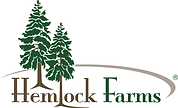Home -> Community Conservation -> Invasive Species
Invasive Species
At Hemlock Farms, we recognize the importance of understanding and managing invasive species. These non-native plants, animals, and insects can disrupt local ecosystems, harm native species, and impact biodiversity. By staying informed and taking proactive measures, we can protect the natural beauty and balance of our environment. Educating ourselves about invasive species helps us preserve the health of our forests, lakes, and wildlife for future generations to enjoy. To help stay informed, check out the Hemlock Farms Conservancy website at HFConservancy.org or contact the conservancy directly at HFConservancy@gmail.com.
Spotted Lanternfly
The Spotted Lanternfly is an invasive species that has made its way into Hemlock Farms, posing a significant threat to local plants, trees, and crops, particularly affecting hardwoods like maple, oak, and fruit trees. These pests damage plants by feeding on sap, weakening trees and making them more susceptible to disease. To protect our environment, it’s essential to report sightings, avoid moving infested materials, and take steps to eliminate the pests. By staying vigilant and taking action, we can help safeguard the natural beauty and health of Hemlock Farms.
Spongy Moth
The Spongy Moth is an invasive species that poses a serious threat to the forests of Hemlock Farms. These destructive pests feed on the leaves of trees, particularly oak, birch, and aspen, defoliating them and weakening their health. Severe infestations can lead to long-term damage, making trees more vulnerable to disease and other stressors. To protect our environment, it’s important to monitor for signs of spongy moths, remove egg masses, and report any infestations. By taking these steps, we can help preserve the beauty and vitality of our local forests.
Autumn Olive
Autumn Olive is an invasive shrub that has spread throughout Hemlock Farms, outcompeting native plants and disrupting local ecosystems. Known for its fast growth and ability to thrive in poor soils, it quickly forms dense thickets that shade out native species, reducing biodiversity. To protect our environment, it’s important to identify and remove Autumn Olive from our landscapes, especially before it produces its invasive berries. By taking action to control its spread, we can help maintain a healthier, more diverse ecosystem at Hemlock Farms.
Native Plants vs. Invasive Plants
Invasive plants are not native to our northeast forest and can cause harm to the natural environment. They are aggressive competitors that invade space for native plants and wildlife. This can wreak havoc on our forest, our water and soil quality, and human health. Please avoid planting invasive plants! We recommend removing these plants if you find them on your property be VERY thorough when collecting roots and debris. All invasive debris should be bagged and properly discarded. Do not compost or dump invasive plants in natural areas.
Invasive Plant Examples:
-
Barberry
-
Bradford Pear
-
Autumn Olive
-
Multiflora Rose
-
Tree of Heaven
Native plants have many benefits: they create healthy habitat, attract beneficial pollinators, and will require less watering as they are already adapted to the forested environment of Pike County. Native plants add beauty to your property in Hemlock Farms
Native Plant Examples:
-
Goldenrod
-
Aster
-
White and Red Oak
-
Highbush and Lowbush Blueberry
-
Black-Eyes Susans
-
Native Rhododendron and Mountain Laurel



.png)


